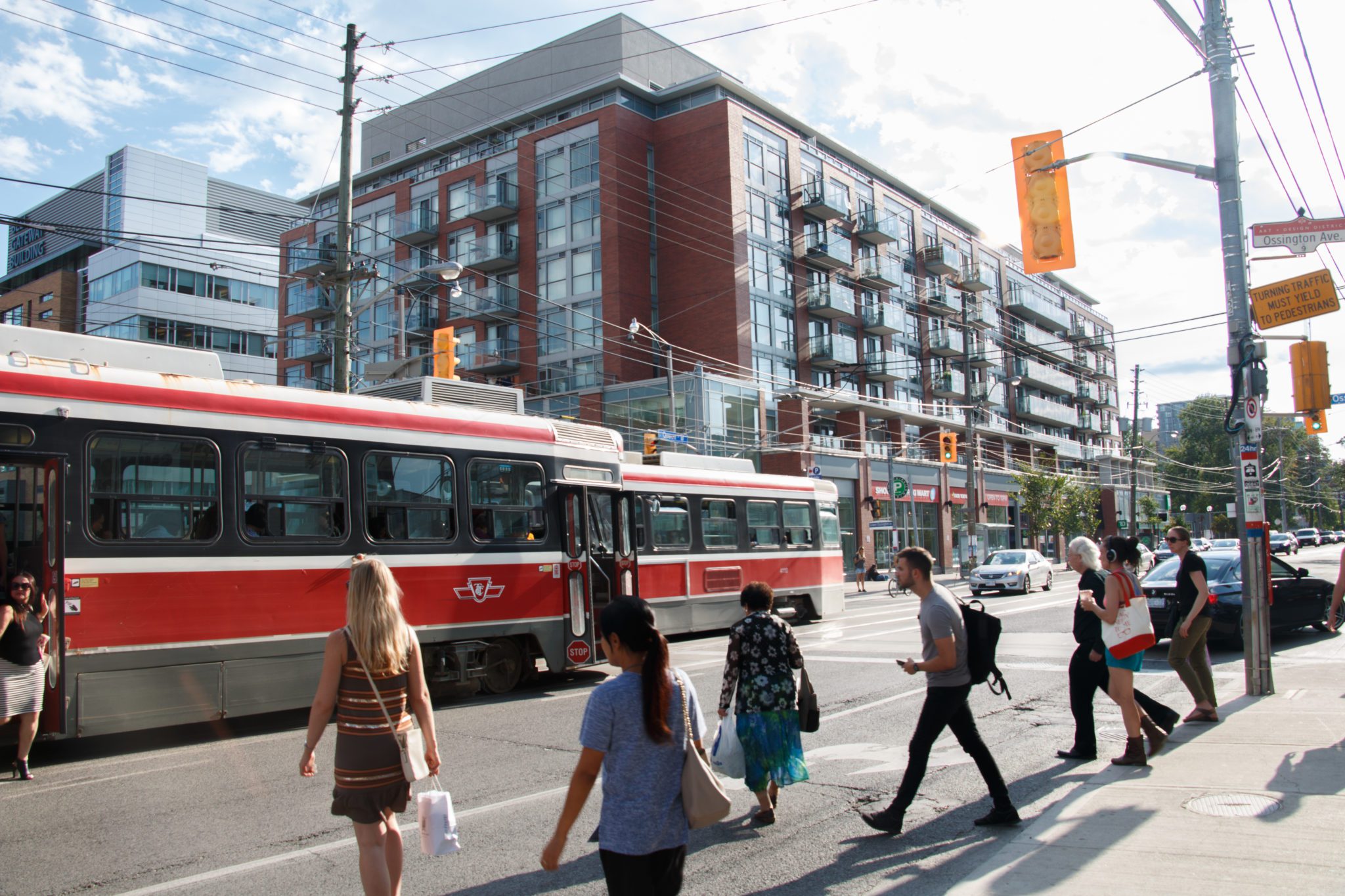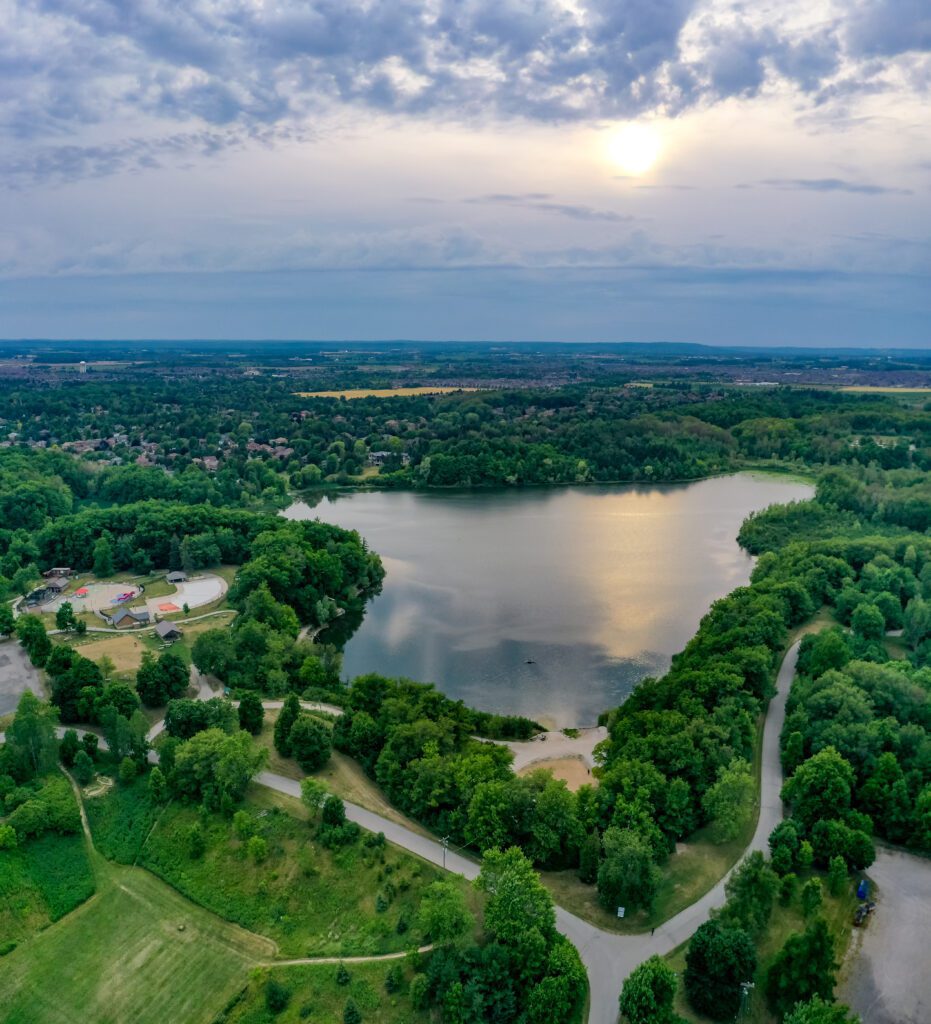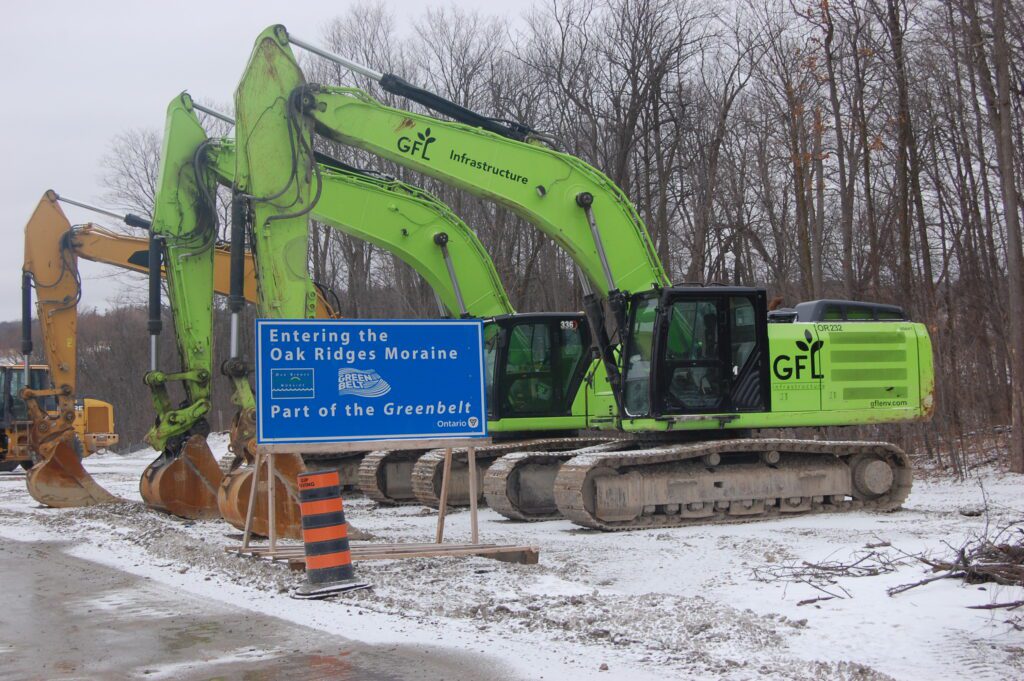From now until December 15th, the City of Toronto is conducting public consultation on Environmental Defence’s proposed change to how housing can be built in existing neighborhoods. This change would allow apartments up to six storeys and 30 units on the major streets that fall within the “Neighborhoods” designation of the City’s Official Plan.
If you live in Toronto, we urge you to support this proposal. This type of mid-rise development incentivizes building a lot of housing quickly and without sacrificing the environment. Protecting wildlife habitat and farmland, tackling greenhouse gas emissions, leveling environmental injustice and fixing housing shortages all depend on this type of development.
The current ban on 4, 5, and 6-storey apartment buildings in residential neighborhoods, which has been in effect for decades, has been a disaster for Ontario’s environment. It has led to Toronto delivering far fewer homes than it could and should have produced, pushing hundreds of thousands of would-be Toronto families into car-dependent, habitat-destroying 905 sprawl. The ban has also prevented Toronto from fixing the large swathes of low-density, car-dependent sprawl within its own boundaries, making it impractical for “residential” parts of Scarborough, Etobicoke, North York and northern East York achieve the population density required to support schools, grocery stores and high-quality transit within easy walking distance. As a result, some areas have seen significant population declines.
To start fixing these problems and reliably house at least 1.4 million net new residents — including families with children — in Toronto by 2051, the city must legalize apartments on major streets within neighbourhoods right now.
Recent changes to the way new 4, 5 and 6-storey apartment buildings are constructed mean that they can now fit elegantly into Toronto’s existing low-rise residential “neighborhoods”, cheek by jowl with townhomes, walk-ups and single detached homes. However, under the current rules, the overwhelming majority of apartments are still restricted to a few tiny pockets of land surrounding existing subway and GO stations — where they are often built by demolishing older low-rent apartment buildings. Outside of these tiny pockets, even “mid-rise” apartments with six or fewer storeys are restricted to “avenues” which are typically high-traffic areas outside the residential-zoned parts of neighborhoods. In older parts of Toronto like Danforth, Bloor, and St. Clair, this can put desperately-needed new housing, that would naturally fit well on residential streets, into needless conflict with existing shops, restaurants and cultural venues. In post World War II areas, it restricts housing options for low and middle-income families to wide, noisy streets with fast-moving traffic.
To meet the needs of families, and slam the brakes on sprawl, Toronto City Council must legalize apartments of up to six storeys and 30 units on lower-traffic major streets that fall within the “Neighborhoods” designation. Provide your feedback using our suggested answers and the survey link below — the consultation is open until December 15th.
Suggested responses
Here are Environmental Defence’s recommended responses to some of the survey questions that centre increasing affordable housing and protecting Ontario’s environment:
Please note the first two questions relate to where you live in the City of Toronto.
QUESTION 3
Please rate the seven principles in order of importance to you from 1 to 7.
Answer:
1 More Housing Opportunity
2 More Building Types
3 Retail and Live/Work (home occupation) Opportunities
4 Consolidate and Minimize Curb Cuts
5 Preserve Existing Mature Trees
6 The Existing and Planned Context
7 Incremental Development
QUESTION 4
Please explain your answer to Question 3 (above)
Answer: The most important factor, from an environmental point of view, is that Toronto accommodates as large a share of the GTHA’s population growth as possible. In particular, it is vital that Toronto incentivize much faster production of family-sized apartments in buildings of 6 storeys within ‘neighborhoods’ so as to provide those families who might otherwise feel ‘pushed’ into car-dependent sprawl in search of a ‘family’ , with an attractive alternative in existing Toronto neighborhoods. This is vital both as a means of preventing new sprawl, but also in order to densify sprawl neighborhoods within Toronto’s boundaries into complete communities that support grocery stores, schools and high order transit within easy walking distance. Creating retail spaces in neighborhoods is important to realize the latter objective. The notion of ‘fitting in’ to neighborhood context is subjective and prone to abuse as a pretext for opposing the juxtaposition of difference & should not be prioritized.
QUESTION 5
The minimum distance of the building from the side property line is 1.8 metres to provide accessible pedestrian access to the rear of the site. The side wall of the building could have small windows. On a scale of 1 to 5, please rate your level of comfort with the 1.8 metre distance of the building from the side property line?
Answer: 5 (very comfortable)
QUESTION 6
Please explain your answer to Question 5 (above).
Answer: I am quite comfortable with a 1.8m setback in the sense that it is more than adequate. However requiring a 6m setback on the other side excessive and counterproductive. That is partly because it reduces the amount of floor space that can be delivered within the footprint and makes certain options that might otherwise be desirable for inhabitants impractical (e.g. u-shaped central courtyard). However the bigger problem is it seems calculated to provide for parking on site, which should be banned.
QUESTION 7
A total of 30% of the site is available for vegetation, including trees, to grow and mature. This space is important to achieving a healthy balance between the built and natural environment, which includes tree protection and growth considerations. On a scale of 1 to 5, please rate your level of comfort with the amount of space for vegetation growth on the site.
Answer: 5 (very comfortable)
QUESTION 8
Please explain your answer to Question 7 (above).
Answer: I am comfortable with this amount of space for vegetation if the remainder of the land is actually used for indoor living space or outdoor living like patios for barbecues, etc. However, vegetation should not be sacrificed for parking, apart from any small number of spaces as may be required for disability accommodation.
Please note Questions 9 – 12 relate to townhouse development. If you’re not sure how to answer, you can check “Prefer Not to Answer” for non-optional rating questions (check box is located underneath the 1-5 scale).
QUESTION 13
The overall building height of the apartment building is 6 storeys. On a scale of 1 to 5, please rate your level of comfort with the height of the apartment building.
Answer: 5 (very comfortable)
QUESTION 14
Please explain your answer to Question 13 (above).
Answer: The most important factor, from an environmental point of view, is that Toronto accommodates as large a share of the GTHA’s population growth as possible. In particular, it is vital that Toronto incentivize much faster production of family-sized apartments in buildings of 6 storeys within ‘neighborhoods’ so as to provide those families who might otherwise feel ‘pushed’ into car-dependent sprawl in search of a ‘family’ , with an attractive alternative in existing Toronto neighborhoods.
QUESTION 15
Please identify which maximum building height range matches your comfort level for the subject lot. Please select one only.
Answer: Other: 10-12 Storeys
QUESTION 16
Please explain what, if any, building feature(s) could be used to increase your comfort level with a taller building height for the apartment building.
Answer: A parking maximum, which prohibits on-site parking in excess of what would be required to meet the needs of the share of residents likely to require a motor vehicle as disability accommodation.
QUESTION 17
The height of the first storey is an additional 0.8 metres more than the average residential floor to accommodate a higher ceiling height for the retail space. On a scale of 1 to 5, please rate your level of comfort with the height of the first storey.
Answer: 5 (very comfortable)
QUESTION 18
Please explain your answer to Question 17 (above).
Answer: Creating viable new retail spaces on residentially zoned “neighborhood” streets that either lost their shops and restaurants in the post-WWII period or which were built without them is essential to retrofitting Toronto’s car-dependent sprawl streets into complete communities where the vast majority of residents can and do access what they need to live comfortably on foot (or by mobility aid) and without resorting to a private motor vehicle.
QUESTION 19
The retail unit (shown in yellow) is at the corner of the building. On a scale of 1 to 5, please rate your level of comfort with the location of retail unit being elsewhere in the building (not the corner).
Answer: 5 (very comfortable)
QUESTION 20
Please explain your answer to Question 19 (above).
Answer: Creating viable new retail spaces (e.g., greengrocers, restaurants) on interior residential streets is very helpful in retrofitting Toronto’s car-dependent sprawl streets into complete communities where the vast majority of residents can and do access what they need to live comfortably on foot (or by mobility aid) and without resorting to a private motor vehicle.
QUESTION 21
The minimum distance of the building from the side property line is 7.5 metres to compensate for the 36-metre length of the building. On a scale of 1 to 5, please rate your level of comfort with the 7.5 metre distance of the building from the side property line?
Answer: 5 (very comfortable)
QUESTION 22
Please explain your answer to Question 21 (above).
Answer: I am comfortable with a 7.5m setback only in the sense that I don’t think 7.5 m is too close. However, I do think 7.5m as a setback would be excessive and counterproductive. That is partly because it reduces the amount of floor space that can be delivered within the footprint and makes certain options that might otherwise be desirable for inhabitants impractical (e.g. u-shaped central courtyard). There is also nothing about being adjacent to a building that should be treated, prima facie, as a hardship, such that it would require relief or “compensation” in the form of an increased setback (or anything else).
QUESTION 23
On a scale of 1 to 5, please rate your level of comfort with a narrower distance of the building from the side property line?
Answer: 5 (very comfortable)
QUESTION 24
Please explain your answer to Question 23 (above).
Answer: A 7.5 m setback would be excessive and counterproductive – partly because it reduces the amount of floor space that can be delivered within the footprint and makes certain options that might otherwise be desirable for inhabitants impractical (e.g. u-shaped central courtyard). There is also nothing about being adjacent to a building that should be treated, prima facie, as a hardship, such that it would require relief or “compensation” in the form of an increased setback (or anything else).
QUESTION 25
The apartment building has a 4-storey height along the local street to respect the existing building height permissions of the area. The building height is 2 storeys lower than the overall building height along the major street. On a scale of 1 to 5, please rate your level of comfort with the lower building height along the local street.
Answer: 2 (uncomfortable)
QUESTION 26
Please explain your answer to Question 25 (above).
Answer: Reducing the building height along the local street is counterproductive because it reduces the housing space that can be delivered within the footprint and makes certain options that might otherwise be desirable for inhabitants impractical (e.g. u-shaped central courtyard). There is no reason why a taller building height relative to adjacent buildings should be treated, prima face, as less compatible than a lower or more similar height. There are advantages to adding scale and breaking monotony in height.
QUESTION 27
On a scale of 1 to 5, please rate your level of comfort if the height of the apartment building were the same height along the local street as it is along the major street.
Answer: 5 (very comfortable)
QUESTION 28
Please explain your answer for Question 27 (above).
Answer: Reducing the building height along the street is counterproductive because it reduces the housing space that can be delivered within the footprint and makes certain options that might otherwise be desirable for inhabitants impractical (e.g. u-shaped central courtyard). There is no reason why a taller building height relative to adjacent buildings should be treated, prima face, as less compatible than a lower or more similar height. There are advantages to adding scale and breaking monotony in height.
Please note the remaining questions are intended to collect information about you and your current housing situation.








